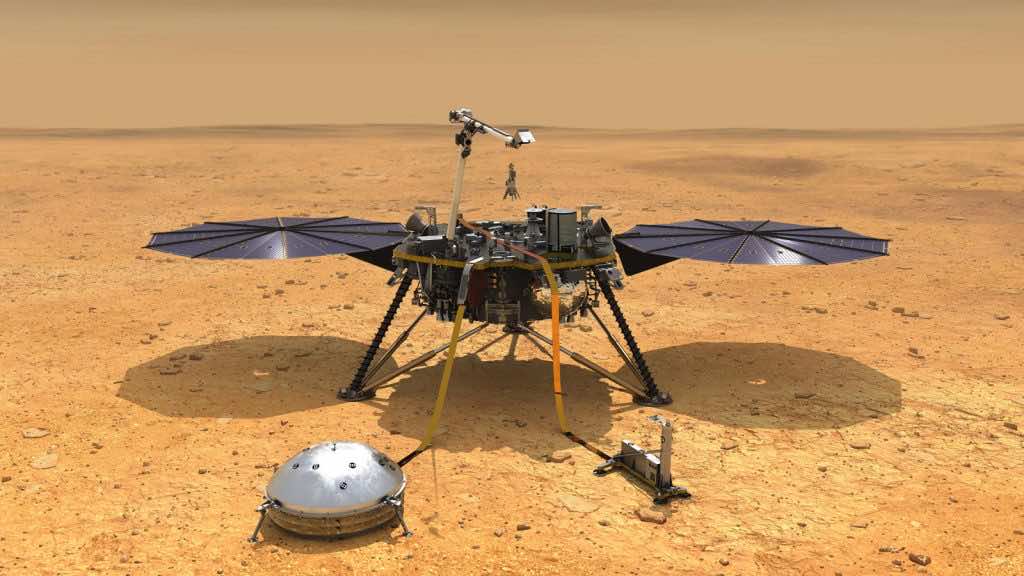It seems that all kinds of space-related machinery are having problems operating these past few weeks. First, it was the Hubble Space Telescope and it now seems that NASA’s Insight Mars Lander is also having problems of its own. The lander is almost 3 years old so some light wear and tear is expected but it’s now facing a predicament that could spell its end. Yep, the Mars Lander is dying.
Martian dust has been accumulating on its solar panels for the past 2 years and it has now reached the point where the power the panels can generate has been drastically reduced. With no Matt Damon there to wipe the dust off, it seems that the Insight Mars Lander’s days are numbered. The entire mission is in danger now.
The information was revealed by Bruce Banerdt, the principal investigator for the InSight mission at NASA’s Jet Propulsion Laboratory. He said that “The dust accumulation on the solar arrays has been considerable. We have about 80% obscuration of the arrays”. The amount of energy available for the lander per day (Mars day) has been reduced from 5,000 watt-hours to less than 700 watt-hours now.
The mission was previously extended toward the end of 2022 so that the Lander could collect data about the seismic activity on the Red Planet. However, it seems that won’t be happening anymore. The lander has served its purpose well and if NASA doesn’t figure out a solution, the mission might just end sometime next year.
They have tried to remove the dust somehow, relying on a process called saltation. Which consisted of the lander’s robotic arm scooping up regolith and releasing it near the panels. Martian winds allowed the particles to bounce off the panels, removing dust in the process. The attempts have given the team some headroom to work with.
According to Banerdt, the first attempt at saltation increased energy output by 25 to 30 watt-hours. A second attempt provided only a temporary increase in energy while the third attempt provided a negligible increase in output. The dust isn’t the only factor. Energy levels are so dropping as Mars is reaching the point in its orbit where it’ll be the farthest away from the sun.
Banerdt still gave the final verdict, saying that “Unless we get a fairly significant increase in our solar array output, we’re likely to end our mission sometime around that time next year”.

